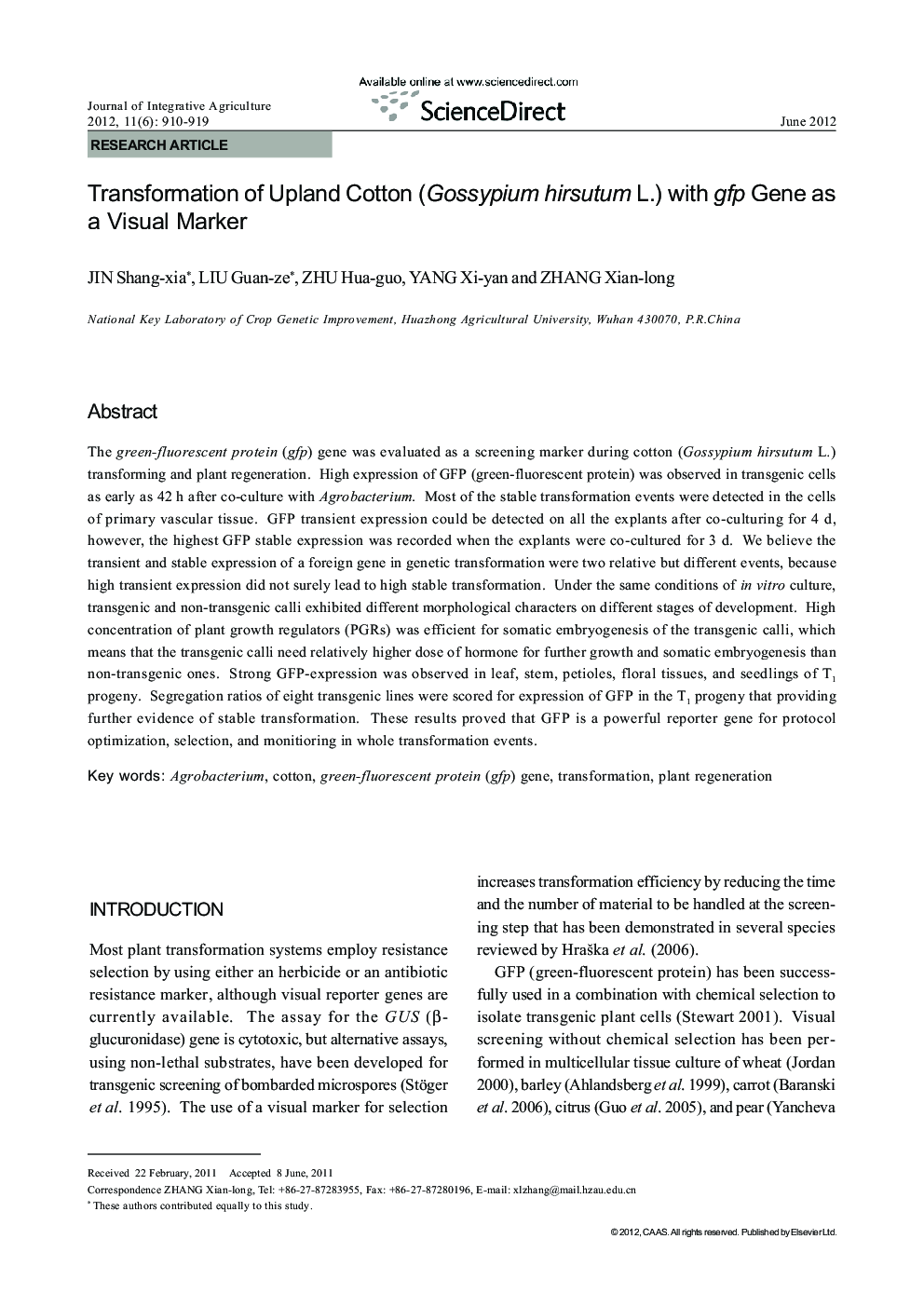| Article ID | Journal | Published Year | Pages | File Type |
|---|---|---|---|---|
| 4495143 | Journal of Integrative Agriculture | 2012 | 10 Pages |
The green-fluorescent protein (gfp) gene was evaluated as a screening marker during cotton (Gossypium hirsutum L.) transforming and plant regeneration. High expression of GFP (green-fluorescent protein) was observed in transgenic cells as early as 42 h after co-culture with Agrobacterium. Most of the stable transformation events were detected in the cells of primary vascular tissue. GFP transient expression could be detected on all the explants after co-culturing for 4 d, however, the highest GFP stable expression was recorded when the explants were co-cultured for 3 d. We believe the transient and stable expression of a foreign gene in genetic transformation were two relative but different events, because high transient expression did not surely lead to high stable transformation. Under the same conditions of in vitro culture, transgenic and non-transgenic calli exhibited different morphological characters on different stages of development. High concentration of plant growth regulators (PGRs) was efficient for somatic embryogenesis of the transgenic calli, which means that the transgenic calli need relatively higher dose of hormone for further growth and somatic embryogenesis than non-transgenic ones. Strong GFP-expression was observed in leaf, stem, petioles, floral tissues, and seedlings of T1 progeny. Segregation ratios of eight transgenic lines were scored for expression of GFP in the T1 progeny that providing further evidence of stable transformation. These results proved that GFP is a powerful reporter gene for protocol optimization, selection, and monitioring in whole transformation events.
